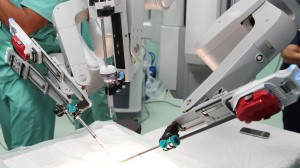A trip through my apartment is a serious lesson in buyer’s remorse. My iPad? What I thought would be a useful note taking and studying tool is more of a $500 YouTube and Netflix consumption machine. My spiffy dual monitor setup that I thought would amp up my productivity? Most of the time I forget to plug in my other monitor and spend my computing sessions staring at my 13” MacBook screen. In fact, that exact situation is occurring right now as I write this. My fancy Bluetooth speaker that I thought would be useful for jamming out when I had friends over? I’ve used it a handful of times, lost the charging cable so the thing won’t even turn on, and have absolutely no desire or intention to either find or buy a new cable.

You may be asking yourself what the point of that rant was, and I don’t blame you. What unifies all those examples is that they are situations when I either purchased or was given a new tech toy that I thought would be life changing, but instead turned out to be unnecessary or obsolete. What I’ve learned from years of accumulating new technology is that while everything comes with copious advertising and monstrous hype, few devices actually deliver as promised.
The medical field is no stranger to this. Hospital administrators and clinical program directors are people too, and they enjoy new toys just as much as the rest of us. Hospitals and universities try to justify their actions by citing journal articles and claiming that having “X” item allows them to remain “on the leading edge of Y specialty.” Let’s be honest, no one is being fooled here. Those new collections of surgical mallets aren’t any better at impacting components than the ones made 20 years ago.
One of the most sought-after technologies is robot-assisted surgical systems, such as the da Vinci©. Are these systems, while definitely innovative and interesting, akin to my iPad? Are they just shiny new toys that don’t justify their cost? Well, let’s find out.
What exactly is this technology?
Robot-assisted surgical systems are surgical workstations, containing robotic arms with cameras and tools, which can be controlled and manipulated by physicians. The most prominent and successful robotic system is the da Vinci©, manufactured by Intuitive Surgical of Sunnyvale, California. The features of this system include four robotic arms that can control surgical tools, a magnified 3D high-definition visual system, and wristed instruments that can produce a range of motion beyond that of the human wrist.1 The claimed benefit of this system is that surgery can be performed with smaller incisions, thus decreasing the pain and recovery time that is usually associated with open surgery.1 These and other systems are currently in use in many different fields such as cardiac, colorectal, gynecological, thoracic, and urological surgery.1 These systems are not cheap however, running upwards of $1 million plus large maintenance and service contracts that can reach into hundreds of thousands of dollars per year.2

What does the literature say about these systems?
There has been much study about these surgical systems, with the number of peer-reviewed articles reaching into the thousands. However, there have been a few recently published studies that have shed some concern about the use of robotic surgical systems. In a letter to the New England Journal of Medicine, physicians from Sloan-Kettering Memorial Cancer Center found little to no advantage when using the da Vinci© system for radical cystectomy.3 They found robotic and open surgery to have similar rates of perioperative complications. They also found that while the patients who underwent robotic surgery had lower blood loss, they also had longer mean length of stay after surgery.3 The longer mean length of stay invariably led to greater costs when using the robotic system.
The American Congress of Obstetricians and Gynecologists, in a March 2013 statement issued by President James T. Breeden, denounced the use of robotic surgical systems.4 Dr. Breeden claims, “There is not good data proving that robotic hysterectomy is even as good as – let alone better – than existing, and far less costly, minimally invasive procedures.”4 This speech came after studies published by researchers at Columbia University cast doubts about the perceived advantages of robotic surgical systems.2
These two examples only represent a few of the many opinions divulged about the topic of robotic surgical systems. The literature is rife with both positive and negative opinions, and it is up to hospital administrators and faculty to gauge the worth of these systems.
Why do so many hospital centers have this technology?
Implementation of these robotic surgical systems has occurred in major surgical centers in the US, France, Italy, Germany, Spain and many other places. If the literature is conflicting on the efficacy of these systems, why is implementation so widespread? I believe the answer is marketing. Top medical centers have a need to “keep up with the Jones’.” If one renowned medical center acquires certain technology, all of the other medical centers instinctively implement that technology as well to avoid a perception of inferiority. There is also a marketing aspect in terms of patient recruitment, as new technology and the promises of a “superior” surgical experience may lure prospective patients away from competing hospital systems. Whether or not the added income from patient recruitment offsets the initial and recurring costs of these systems is, to my knowledge, yet unknown.
My conclusion on this topic is that these surgical systems are akin to my iPad. They are good in theory, but their cost and relative utility make them a bad investment at the moment. However, this is not to say that these systems will never find justifiable use. With new innovation these systems may find a niche that makes them both efficacious and profitable. Just as a new app may breathe more life into my iPad, new research and better training with the robotic surgical systems may lead to advancements that will justify their implementation.
References
1.http://www.intuitivesurgical.com/
2.http://online.wsj.com/news/articles/SB10001424127887323764804578314182573530720
3.Bochner, B. H., Sjoberg, D. D., & Laudone, V. P. (2014). A randomized trial of robot-assisted laparoscopic radical cystectomy. N Engl J Med, 371(4),389-390.
4.http://www.acog.org/About-ACOG/News-Room/News-Releases/2013/Statement-on-Robotic-Surgery
Featured image:
Da Vinci Surgical Robot by Ars Electronica

